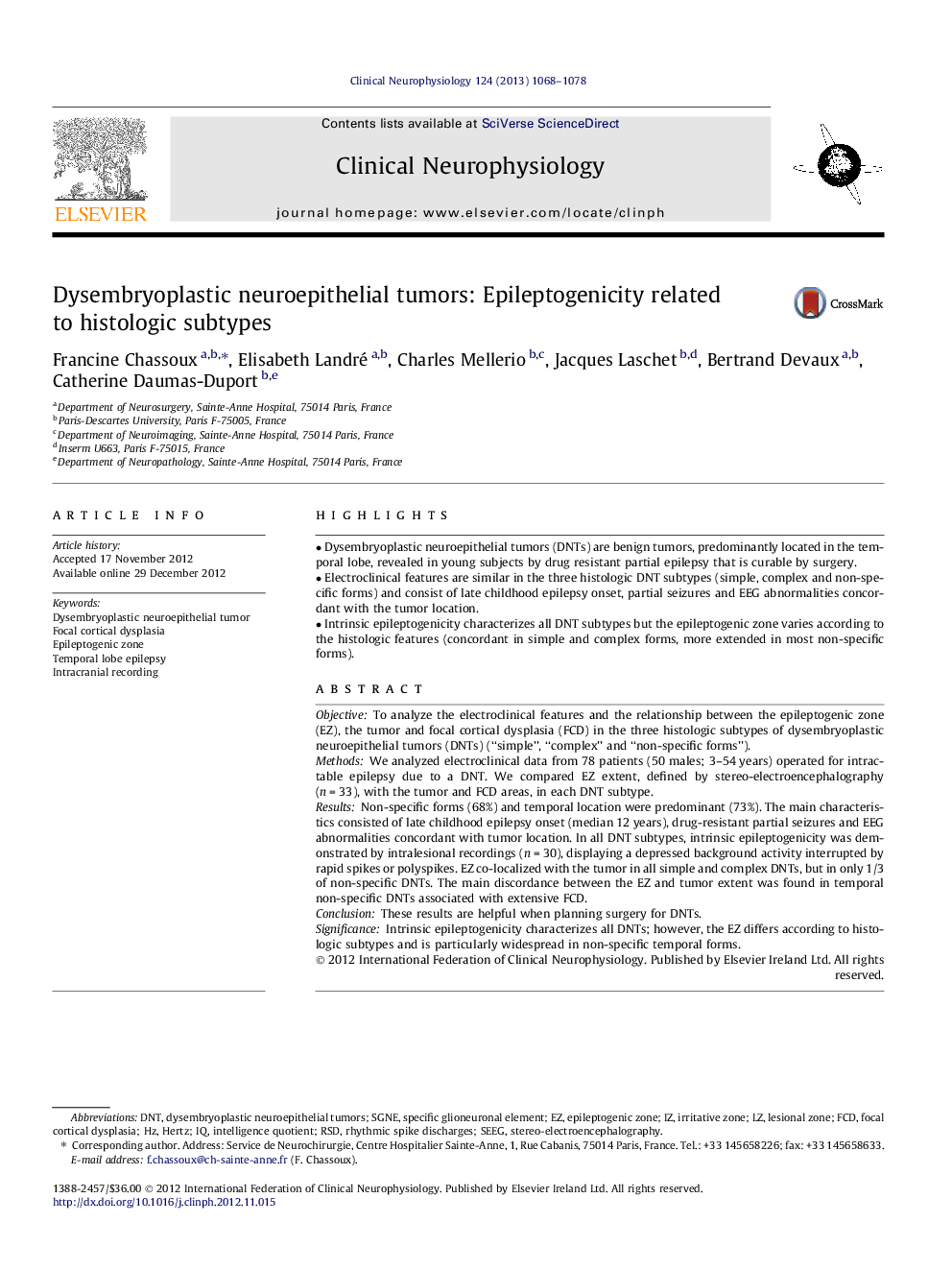| Article ID | Journal | Published Year | Pages | File Type |
|---|---|---|---|---|
| 3043861 | Clinical Neurophysiology | 2013 | 11 Pages |
ObjectiveTo analyze the electroclinical features and the relationship between the epileptogenic zone (EZ), the tumor and focal cortical dysplasia (FCD) in the three histologic subtypes of dysembryoplastic neuroepithelial tumors (DNTs) (“simple”, “complex” and “non-specific forms”).MethodsWe analyzed electroclinical data from 78 patients (50 males; 3–54 years) operated for intractable epilepsy due to a DNT. We compared EZ extent, defined by stereo-electroencephalography (n = 33), with the tumor and FCD areas, in each DNT subtype.ResultsNon-specific forms (68%) and temporal location were predominant (73%). The main characteristics consisted of late childhood epilepsy onset (median 12 years), drug-resistant partial seizures and EEG abnormalities concordant with tumor location. In all DNT subtypes, intrinsic epileptogenicity was demonstrated by intralesional recordings (n = 30), displaying a depressed background activity interrupted by rapid spikes or polyspikes. EZ co-localized with the tumor in all simple and complex DNTs, but in only 1/3 of non-specific DNTs. The main discordance between the EZ and tumor extent was found in temporal non-specific DNTs associated with extensive FCD.ConclusionThese results are helpful when planning surgery for DNTs.SignificanceIntrinsic epileptogenicity characterizes all DNTs; however, the EZ differs according to histologic subtypes and is particularly widespread in non-specific temporal forms.
► Dysembryoplastic neuroepithelial tumors (DNTs) are benign tumors, predominantly located in the temporal lobe, revealed in young subjects by drug resistant partial epilepsy that is curable by surgery. ► Electroclinical features are similar in the three histologic DNT subtypes (simple, complex and non-specific forms) and consist of late childhood epilepsy onset, partial seizures and EEG abnormalities concordant with the tumor location. ► Intrinsic epileptogenicity characterizes all DNT subtypes but the epileptogenic zone varies according to the histologic features (concordant in simple and complex forms, more extended in most non-specific forms).
